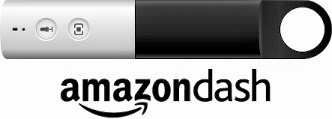
Dash, the latest technical innovation from Amazon threatens to totally change the whole shopping experience… and retail loyalty.
Using a combination of voice recognition and bar code scanning, the standalone “wand” allows anyone in the household to add to the shopping list when an item is running low, has run out or is simply needed. Either by scanning the item that is about to be consumed or just saying what item is required, the dash adds it to your shopping list for later fulfilment.
Interestingly the idea is nothing new.
Apps like Shopper Pro allow you to maintain a shopping list and scan items onto it. Back in 2000, LG launched one of the first connected devices with the Smart Fridge that incorporated a modem (remember those) and a touch screen to allow items to be inventoried, managed and re-ordered.
What Amazon have done though is different.
Whilst consumers have been happy to collapse many different gadgets into their smartphone such as a camera, videophone, GPS, fitness tracking or video games, they don’t always fit into every scenario. When I’m in the middle of cooking, with dirty hands, liquids and a hot stove, getting my smartphone out and navigating the security and app selection is not going to be high on the agenda… Sometimes a specific, dedicated, connected device can be a much better user experience.
By creating a single-purpose device, Amazon have been able to hone the user experience to be exactly what’s needed.
- It had to recognise that a household is made up of many individuals, so a mobile app wouldn’t have shared well
- It had to recognise that not everything has a bar code – fresh produce for example, or an item not yet purchased which is required for a recipe – so voice input closed this gap
- It had to recognise that the device would have to function within a busy kitchen environment so it’s wipe clean and includes a hanging loop so it can sit right alongside other utensils.
User experience would have been key to the product design.
Amazon also had another advantage though and that is the closed loop ordering. As a supplier of the goods through AmazonFresh, the dash connects the consumer from the moment of need to the moment of purchase seamlessly.
This is the real benefit of the dash – frictionless shopping and the loyalty effect this creates.
One of the main aims of loyalty marketing is to use knowledge about a customer and their purchase habits to reduce friction in the relationship to make it easier for them to do business with you. In that respect, the dash is a fantastic loyalty play.
It provides the consumer with utility – a useful product/service. It reduces friction in the purchase process by streamlining the process of shopping. It provides stickiness as I’m unlikely to build my shopping list in AmazonFresh and then go and order it from competitor.
Like the Evian “smart object” launched back in 2012 to enable product re-ordering at the point of consumption, the dash cuts through decision making and in the process is likely to increase loyalty, reduce price sensitivity and reduce the paradox of choice.
Whilst AmazonFresh is fairly niche at present, it will be interesting to see if dash will create competitor offerings from other retailers, all fighting for that newly created “front of kitchen draw” position.



